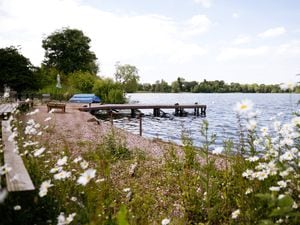Threatened species could recover and thrive if peatlands restored, experts say
WWF Scotland raised concerns of the bogs being under pressure due to burning and commercial extraction for peat-based compost.

Some of Scotland’s most threatened wildlife species could recover and thrive if the country’s peatlands are restored, according to environmental experts.
WWF Scotland says the unique habitats provide homes for a range of creatures including the red listed merlin, hen harrier and curlew as well as newts, frogs and lizards.
The environmental organisation has raised concerns about the bogs being under pressure due to burning and commercial extraction for peat-based compost.

Dr Sheila George, food and environment policy manager at WWF Scotland, said: “The importance of our precious peatlands cannot be overestimated.
“When well looked after, they are natural carbon sinks, locking away climate-damaging carbon, and home to a wide range of wildlife, including bog specialist species such as the large heath butterfly, bog sun-jumper spider and sphagnum mosses.
“We’ve seen welcome progress to protect peatlands over the last year, including more funding for restoration and the recently announced ban on burning.
“But we also need to halt commercial extraction for horticulture – this is not compatible with Scotland’s climate or nature ambitions.
“And of course, we can all play our part by choosing peat-free compost.”

Commercial peat extraction is said to remove sensitive bog vegetation and the carbon-rich soil which can cause soil erosion and water quality issues, as well as impacting upon the local wildlife.
Dr Emma Goodyer, IUCN UK Peatland Programme leader, said: “Scotland’s peatlands are hugely significant for biodiversity, fresh water and carbon storage. Yet 80% of peatlands in Scotland are degraded.
“Restoring these mighty bogs would have benefits for people and nature – from the charismatic birds that make peatlands their home to the weird and wonderful insects and carnivorous plants that thrive there too.
“And with modern alternatives to peat-based compost now available, there really is no reason not to halt extraction and peat compost imports, invest in restoring our extracted lowland peatlands and avoiding the costly consequences of continuing to exploit them.”





